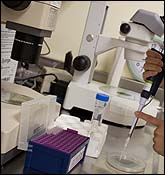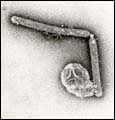 Last week the Bureau of Industry and Security (“BIS”) added three parties to the Entity List and imposed license requirements for exports, re-exports and in country transfers to these parties for all items subject to the Export Administration Regulations, i.e., items exported from the United States or with certain percentages of U.S. content. The order adding the parties to the Entity List indicated that there would be a presumption of denial for all license applications involving the three parties.
Last week the Bureau of Industry and Security (“BIS”) added three parties to the Entity List and imposed license requirements for exports, re-exports and in country transfers to these parties for all items subject to the Export Administration Regulations, i.e., items exported from the United States or with certain percentages of U.S. content. The order adding the parties to the Entity List indicated that there would be a presumption of denial for all license applications involving the three parties.
As is typically the case, BIS provides only scant detail about what got these three parties into hot water beyond saying that they had been involved in the transhipment of items to Iran and Syria. Looking at the identity of the parties allows one to make some more reasonable assumptions about what was going on. One of the designated entities was Canada Lab Instruments in Montréal, which describes itself in a business directory as “supplying a wide range of environmental, laboratory, measuring and analytical instruments for researching and educational purposes from the most famous manufacturers.” The second entity, Abou Elkhir Al Joundi, is an individual who owns Canada Lab Instruments and was educated in Damascus, Syria. The third entity was “Masound [sic] Est. for Medical and Scientific Supplies” in Amman, Jordan, which describes itself in a business directory as involved in the distribution of medical and scientific laboratory equipment.
It seems, therefore, reasonable to assume that the three entities were put on the Entity List in connection with shipment of medical and lab equipment from Canada and through Jordan to Syria and Iran. The quantity and value of the shipments, however, cannot be determined and the BIS order gives no indication. This also does not seem to involve items of particular concern to the interests of the United States in Iran and Syria, particular since the medical equipment probably would have been eligible for licenses. But I guess if we are chasing folks for selling nail polish to Iran, everything is fair game.
As a side issue, if BIS wants to put people in jail for future unlicensed exports to the Jordan company, it at least ought to spell the name of the company correctly on the list establishing this license requirement. It’s “Masoud,” not “Masound.”

 Posted by
Posted by  Category:
Category: 


 In the last release of civil penalty information, the Office of Foreign Assets Control (“OFAC”)
In the last release of civil penalty information, the Office of Foreign Assets Control (“OFAC”)  The State Department’s Bureau of International Security and Non-Proliferation released today a
The State Department’s Bureau of International Security and Non-Proliferation released today a  Apparently international research on how best to prevent, contain and treat bird flu is now threatened by international laws restricting export of information relating to potential agents of biological warfare according to
Apparently international research on how best to prevent, contain and treat bird flu is now threatened by international laws restricting export of information relating to potential agents of biological warfare according to 

